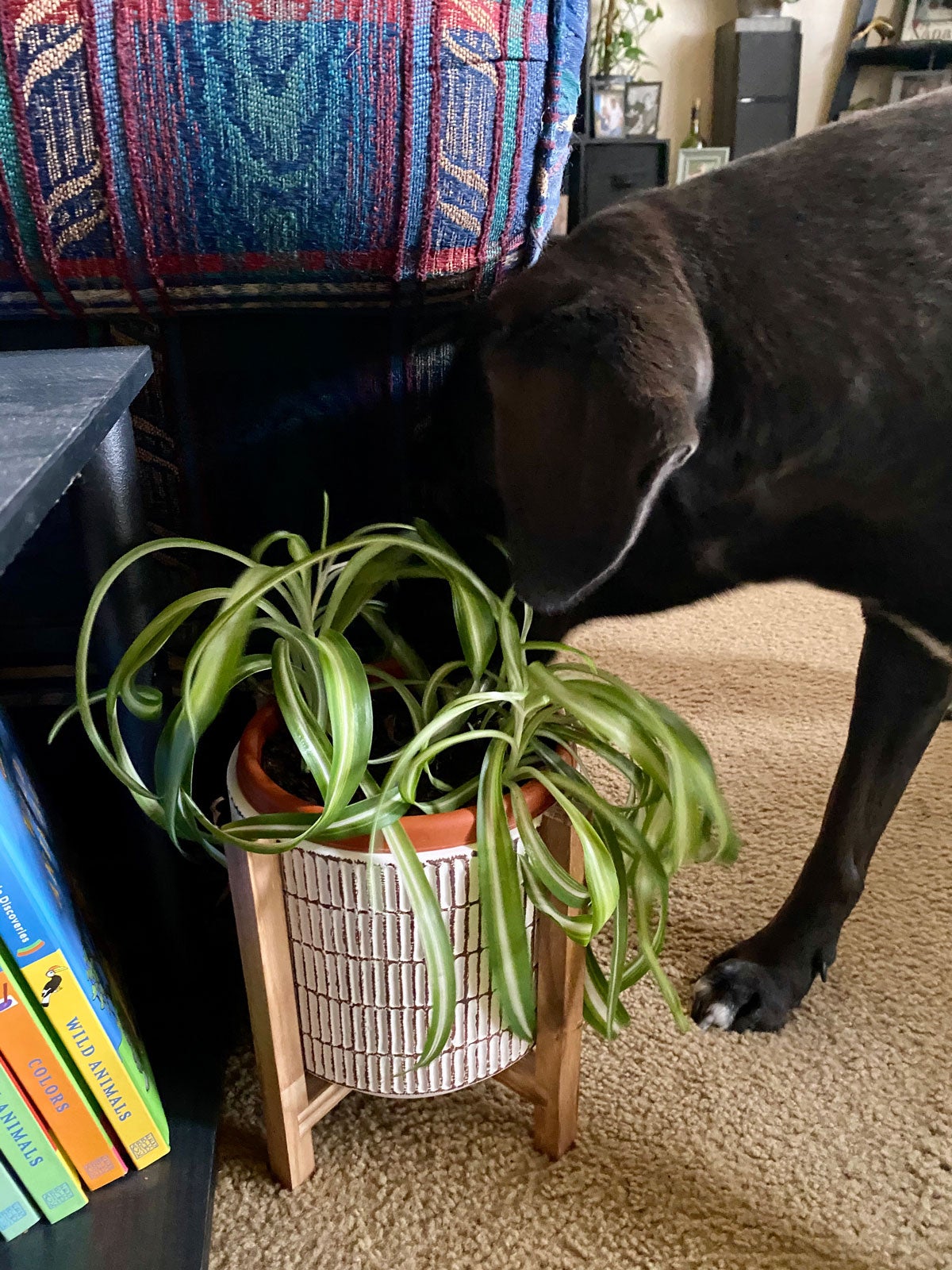
Do you love growing
houseplants but are worried that they may be toxic for Fido? Fortunately, there
are quite a few houseplants dogs won’t eat, and if they do, they won’t get sick
from them. Let’s explore some dog-friendly houseplants that you can grow with
peace of mind.
Are There Houseplants Safe for Dogs?
The best-case scenario would be to place all plants, whether
they are considered toxic or not, out of reach of your pets. Just because a
plant is considered non-toxic doesn’t mean that it is necessarily good for your
dog.
Before we get into plants that are non-toxic, you’ll definitely want to avoid the following, and if you do have them, keep them well out of reach of your pets and children:
- Poinsettia (can be an irritant, but toxicity has been exaggerated)
Safe Indoor Plants for Dogs
There are many plants that are safe for dogs such as:
- African Violets – African violets are great smaller flowering houseplants that come in a range of flower colors. They even come in variegated varieties. Average indoor conditions are fine for these plants and they will even bloom well in lower light.
- Bromeliads – Any plant in the Bromeliad family, including air plants are great selections. If you choose to leave your air plants loose and not mounted, be careful that they are out of reach. While they won’t pose any threat to your dog, they may not handle being “played” with or chewed on. Air plants and other bromeliads like a lot of air circulation so be weary of stagnant air.
- Spider Plant – Spider plants are another great non-toxic option if you have dogs. They thrive in average conditions, propagate readily, and look great in any décor.
- Ferns – Some ferns, such as Boston ferns and Maidenhair, are non-toxic, but be careful of the asparagus fern which is actually not a fern at all and is toxic. Ferns thrive in humid areas of your home, so they’re great choices for areas like bathrooms.
- Moth Orchid – Phalaenopsis orchids are also great choices. They have the added bonus of blooming during winter when most other houseplants languish.
Other good choices include:
Do you love growing
houseplants but are worried that they may be toxic for Fido? Fortunately, there
are quite a few houseplants dogs won’t eat, and if they do, they won’t get sick
from them. Let’s explore some dog-friendly houseplants that you can grow with
peace of mind.
Are There Houseplants Safe for Dogs?
The best-case scenario would be to place all plants, whether
they are considered toxic or not, out of reach of your pets. Just because a
plant is considered non-toxic doesn’t mean that it is necessarily good for your
dog.
Before we get into plants that are non-toxic, you’ll definitely want to avoid the following, and if you do have them, keep them well out of reach of your pets and children:
- Poinsettia (can be an irritant, but toxicity has been exaggerated)
Safe Indoor Plants for Dogs
There are many plants that are safe for dogs such as:
- African Violets – African violets are great smaller flowering houseplants that come in a range of flower colors. They even come in variegated varieties. Average indoor conditions are fine for these plants and they will even bloom well in lower light.
- Bromeliads – Any plant in the Bromeliad family, including air plants are great selections. If you choose to leave your air plants loose and not mounted, be careful that they are out of reach. While they won’t pose any threat to your dog, they may not handle being “played” with or chewed on. Air plants and other bromeliads like a lot of air circulation so be weary of stagnant air.
- Spider Plant – Spider plants are another great non-toxic option if you have dogs. They thrive in average conditions, propagate readily, and look great in any décor.
- Ferns – Some ferns, such as Boston ferns and Maidenhair, are non-toxic, but be careful of the asparagus fern which is actually not a fern at all and is toxic. Ferns thrive in humid areas of your home, so they’re great choices for areas like bathrooms.
- Moth Orchid – Phalaenopsis orchids are also great choices. They have the added bonus of blooming during winter when most other houseplants languish.
Other good choices include:
